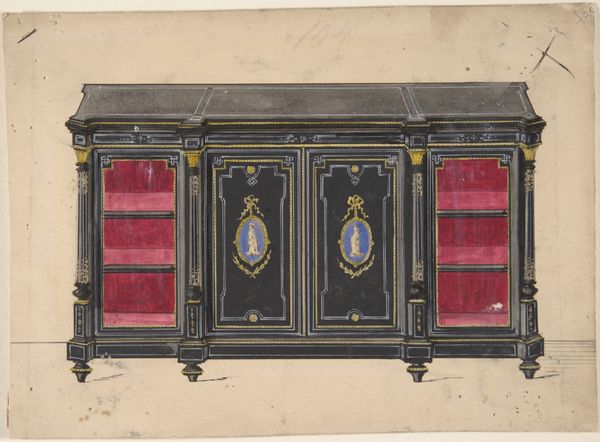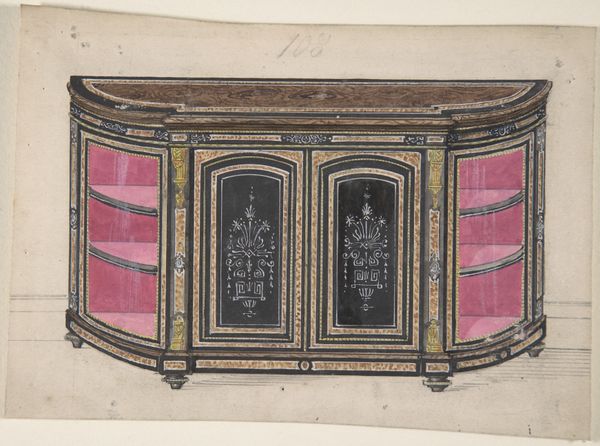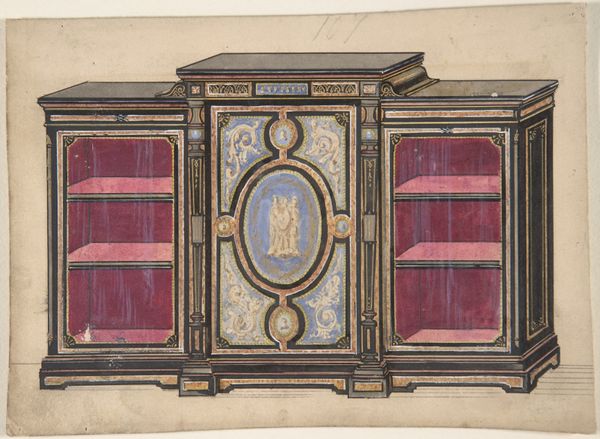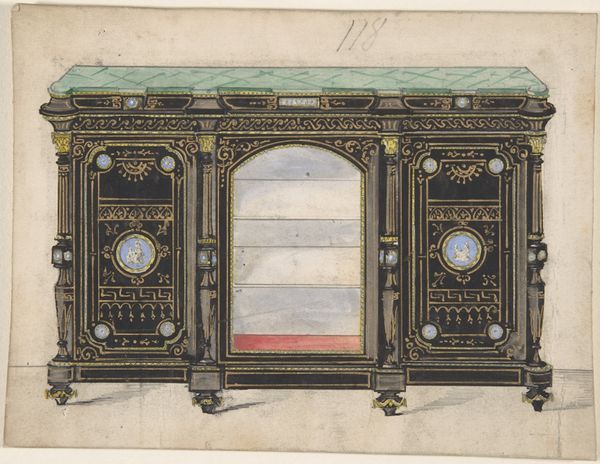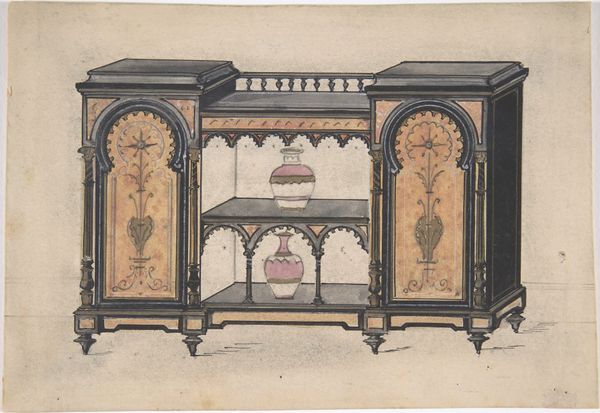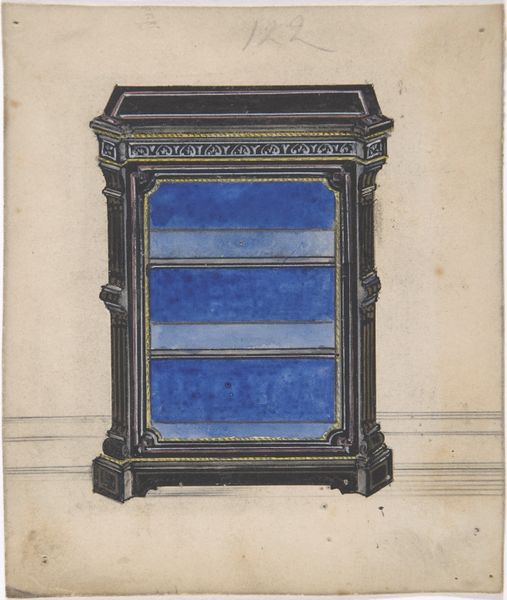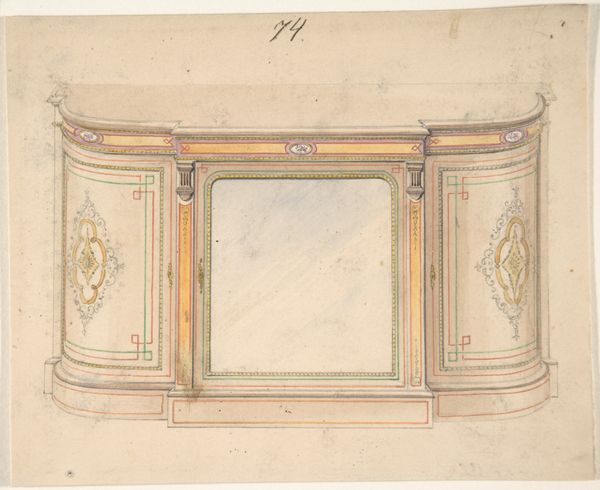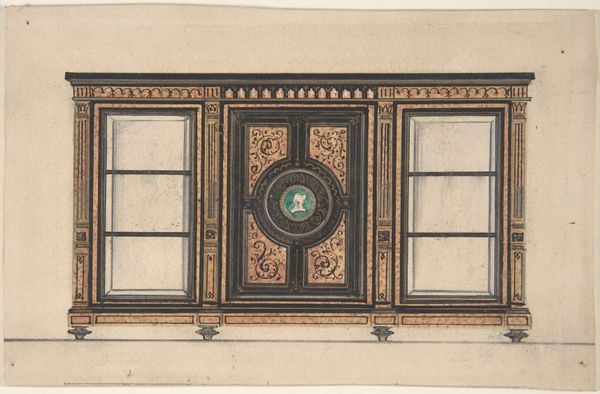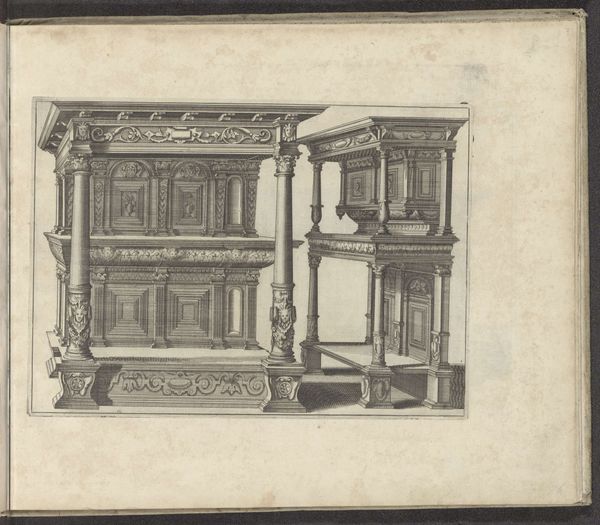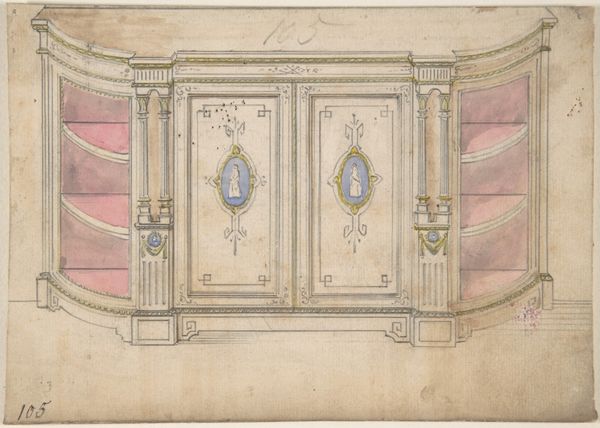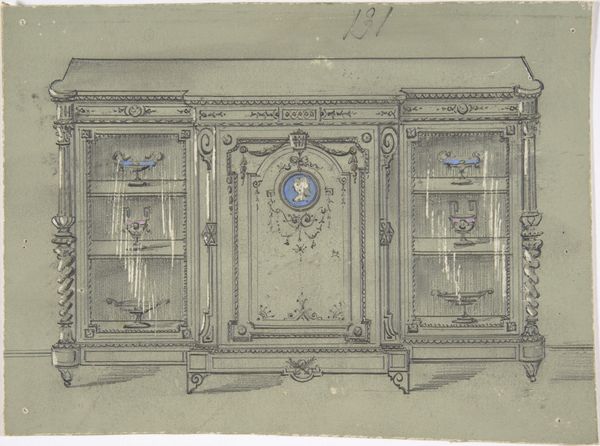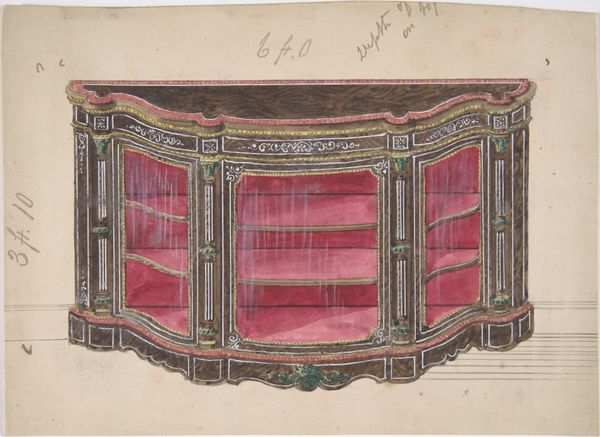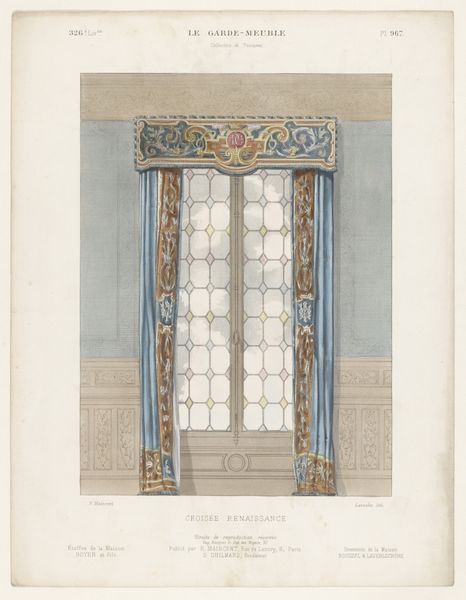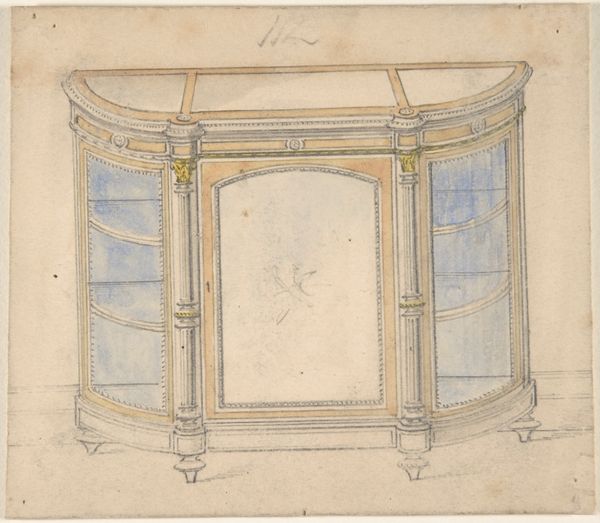
Design for a Cabinet with a Black Top and Blue Interior 1800 - 1900
0:00
0:00
drawing, coloured-pencil, print, watercolor
#
drawing
#
neoclacissism
#
coloured-pencil
# print
#
form
#
watercolor
#
coloured pencil
#
geometric
#
line
#
decorative-art
Dimensions: sheet: 5 3/16 x 6 7/8 in. (13.2 x 17.5 cm)
Copyright: Public Domain
Curator: At first glance, I see this curious blend of rigidity and whimsy, a striking study in contrasts through a cabinet design. Editor: Indeed. Here we have a drawing, watercolor, colored pencil, and print combination entitled "Design for a Cabinet with a Black Top and Blue Interior," believed to be created sometime between 1800 and 1900 by an anonymous artist. Currently, it resides here at the Metropolitan Museum of Art. The period offers interesting insights into production and consumption... Curator: Intriguing! Those clean, neoclassical lines are undeniable. But what arrests me is the use of color—the black feels like power, yet the blue is a watery contrast of interior and reflection, separated and connected by curvilinear forms, an aesthetic negotiation. Editor: I’m more drawn to how such a design reflects the era’s social stratification. Furniture like this was about signaling status through displays of craft. Consider the labor involved—the artisans, the materials sourced, the consumption patterns it implies. It wasn't simply decorative; it was a manifestation of economic power. Curator: The symmetry is obvious, isn't it? Vertical pilasters giving rhythm, mirroring diamond shapes centrally anchoring one's attention while subtle variations are presented in the cabinet details which add a human element, but within a controlled vocabulary. It feels like an argument about order versus chaos. Editor: Think, too, about the spaces furniture like this would occupy—drawing rooms or studies, used for specific performances of elite domesticity. The materiality is tied to social practices and class distinctions. Every carefully placed line has everything to do with display and labor. Curator: It’s interesting you should say that. It raises a fundamental question about what's highlighted and valued from the artwork's structure, how the balance is calibrated and how visual pleasure, order and visual communication function for its own sake. Editor: Ultimately, this cabinet, or rather this design of a cabinet, speaks volumes about the intricate relationship between aesthetics, labor, and social dynamics. Curator: Yes, the design shows not only the potential to influence a patron, but offers interesting perspectives through this convergence between the social impact with shape, line and color that still can communicate centuries later.
Comments
No comments
Be the first to comment and join the conversation on the ultimate creative platform.
